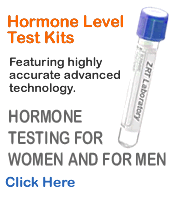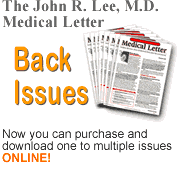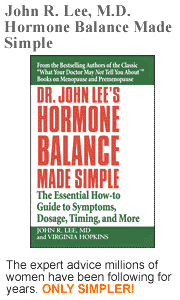|
|
||||
|
For suggestions on how to find a doctor in your area, please go to:  |
||||
|
Suzanne Somers and The Sexy Years: A Book Review |
||||
By Virginia Hopkins Some good reading and some misconceptions about natural, bioidentical hormones. In her book The Sexy Years, Suzanne Somers has done a wonderful job describing the perils of the hormonal imbalances that menopause can bring, and she has certainly put natural, bioidentical hormones on the map with media appearances on everything from Home Shopping Network to the Larry King Show. The Sexy Years is a good read, with plenty of personal stories, helpful descriptions of how hormones work, and some interesting interviews with physicians who use bioidentical hormones in their medical practices. In particular, Somers draws from her friend, Dr. Diana Schwarzbein (author of The Schwarzbein Principle), an endocrinologist who uses natural, bioidentical hormones. Dr. Schwarzbein has drawn heavily from Dr. Lee’s work over the years, and they even borrowed a slightly altered version of his Three Rules for Hormone Replacement for Somers’ book, which you can find in the original on this website (http://www.johnleemd.com/thruforusbih.html). Pregnancy, Hormones and Health Another statement Somers makes is that, “Postmenopausal women should not be mimicking pregnancy since the risks associated with pregnancy (heart attack, stroke, type 2 diabetes, and breast cancer) increase exponentially with age.” Scharwzbein reiterates this in her interview, but unfortunately does not explain her theory. While a few pregnant women are susceptible to gestational diabetes and eclampsia (high blood pressure), this doesn’t mean that the hormones of pregnancy directly cause these problems. In fact, the majority of women are radiantly healthy during their last trimester of pregnancy, when hormones are the highest. Pregnancy hormones may cause a flare-up of a breast cancer tumor that was already established, but long term, one of the best-established factors that lowers the risk of breast cancer is pregnancy. In fact, the earlier a woman gets pregnant, and the more pregnancies she has, the lower her risk of breast cancer. For details on hormones and breast cancer, with extensive documentation, please read What Your Doctor May Not Tell You About Breast Cancer. You Don’t have to have Periods to Have Postmenopausal Hormone
Balance On the other hand, it is not necessary for a postmenopausal woman to have periods if she is using bioidentical hormones properly. When postmenopausal women use small doses of bioidentical hormones, they rarely, if ever, have periods, nor do they have the risky endometrial buildup in the uterus which is what makes it important to have periods. Estrogen stimulates the buildup of uterine tissue, but there’s no need to take that much estrogen to feel healthy and balanced. Since fat cells create estrogen, women who are heavy may not even need to use supplemental estrogen. Dr. Lee’s recommendation was always to use 15 to 30 mg of progesterone daily, and the lowest dose of estrogen that would either clear up estrogen deficiency symptoms or show normal levels on a saliva hormone level test. This improves health and well-being, but doesn’t put a postmenopausal woman back into the same hormonal milieu she had when she was menstruating every month. These misconceptions are undoubtedly due to 1) the use of the oral (pill)
form of progesterone (e.g. Prometrium), and 2) the use of blood tests to
measure hormone levels. Blood Tests vs. Saliva Tests Overdosing Creates the Same Old Problems Excess estrogen is particularly problematic, not just because it causes the symptoms above, but also because it’s an “upper,” or stimulating, and it can, in effect, become addictive. In excess, estrogen can create a kind of hyper-talkative, restless, even agitated state that passes for increased energy. The brain gets used to the higher level of “excitement” and when estrogen levels drop, it can cause depression and fatigue. If you’re leading a stressful life, taking more estrogen to pump up your energy is akin to taking drugs such as speed – it may produce a temporary high, but there’s always a corresponding low to follow. The wiser strategy is to manage stress by eating well, getting plenty of sleep and exercise, practicing some form of meditation, supporting adrenal function (see What Your Doctor May Not Tell You About Menopause for details), and creating hormone balance. If you’d like detailed information on how to use natural, bioidentical
hormones in a way that creates balance, and is in tune with your body’s
natural way of doing things, please read the newly updated and revised edition
of What Your Doctor May Not Tell You About
Menopause.
|
||||



